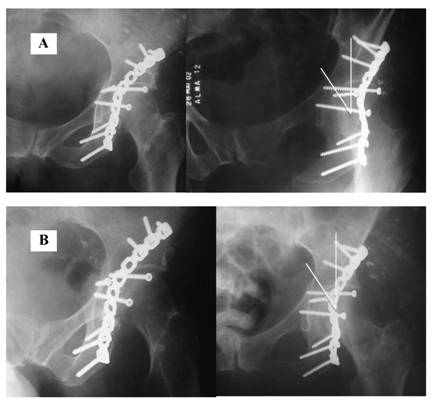

The “spur” sign, representing the edge of intact ilium adjacent to the fracture, is pathognomonic of the both-column fracture. The transverse acetabular ligament (transverse ligament or Tunstall’s ligament) is a portion of the acetabular labrum, though differing from it in having no cartilage cells among its fibers. The reduced hemipelvises were fixated using 3. Methods: A transverse acetabular fracture was created and reduced anatomically in 18 synthetic hemipelvises. A biomechanical model was created to investigate this theory. The both-column fracture is a complex injury with no part of the articular surface of the hip socket remaining attached to the axial skeleton. However, our experience has pushed us to hypothesize that their use as sole means of fixation may cause fracture malreduction.

The T-shaped fracture combines the transverse fracture with a vertical fracture most commonly passing through the acetabular fossa and notch and the inferior ischiopubic ramus. A combination of posterior wall and transverse injuries characterizes the transverse and posterior wall fracture. The fracture plane actually is oblique from superomedial to inferolateral. Radiographically, part of the superior articular surface or dome remains attached to the intact ilium. Transverse acetabular fractures divide the hemipelvis through the acetabulum into superior and inferior portions, and do not involve the obturator ring. A portion of the posterior articular surface and rim is sheared from the pelvis by posterior dislocation of the hip. Posterior acetabular wall fractures are the most common. Five fracture types in the Letournel–Judet classification account for 80-90% of cases.


 0 kommentar(er)
0 kommentar(er)
